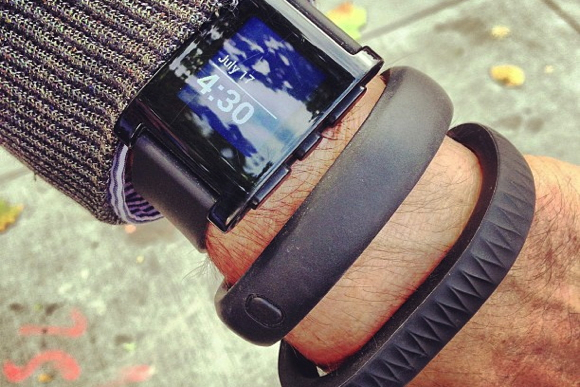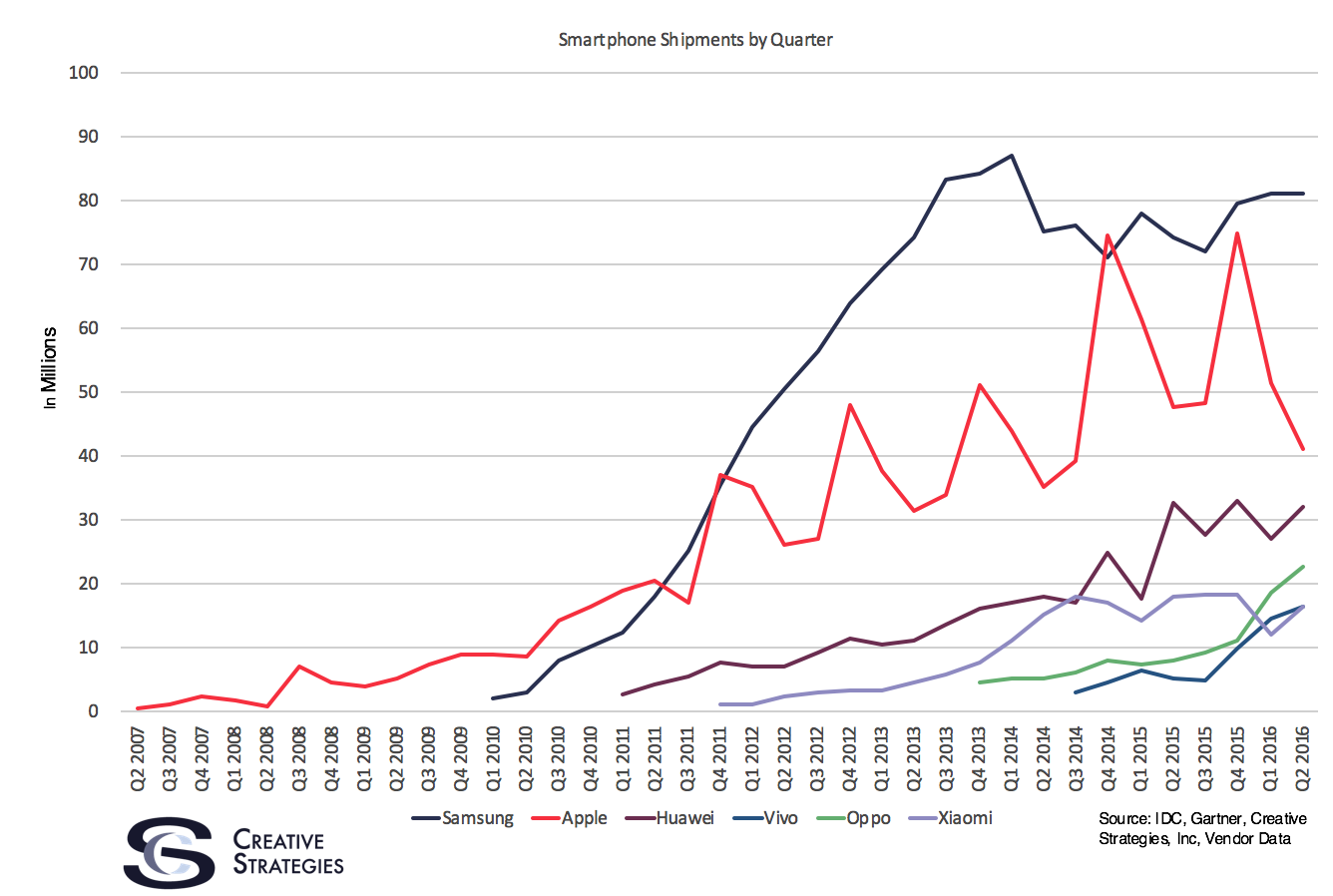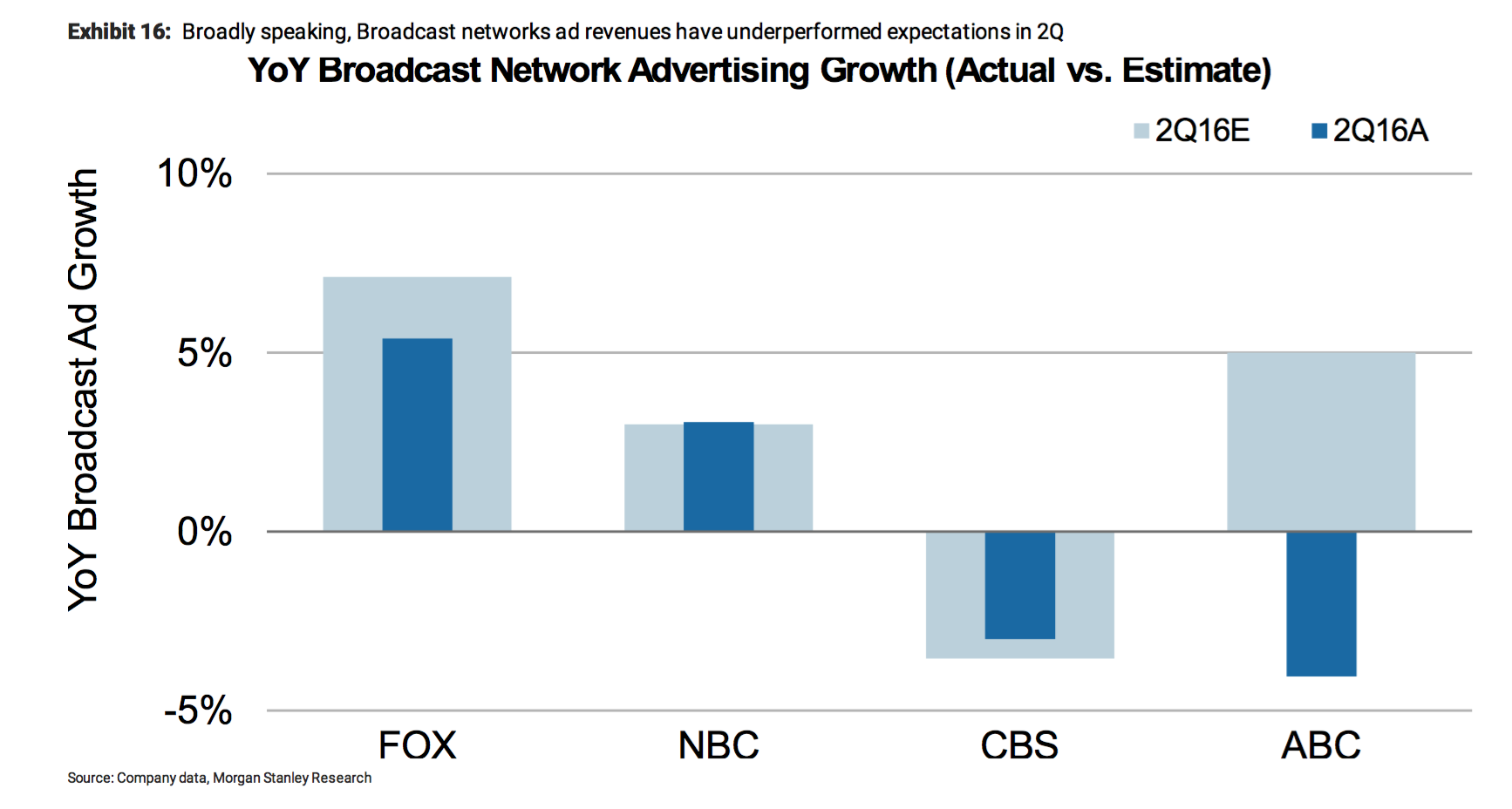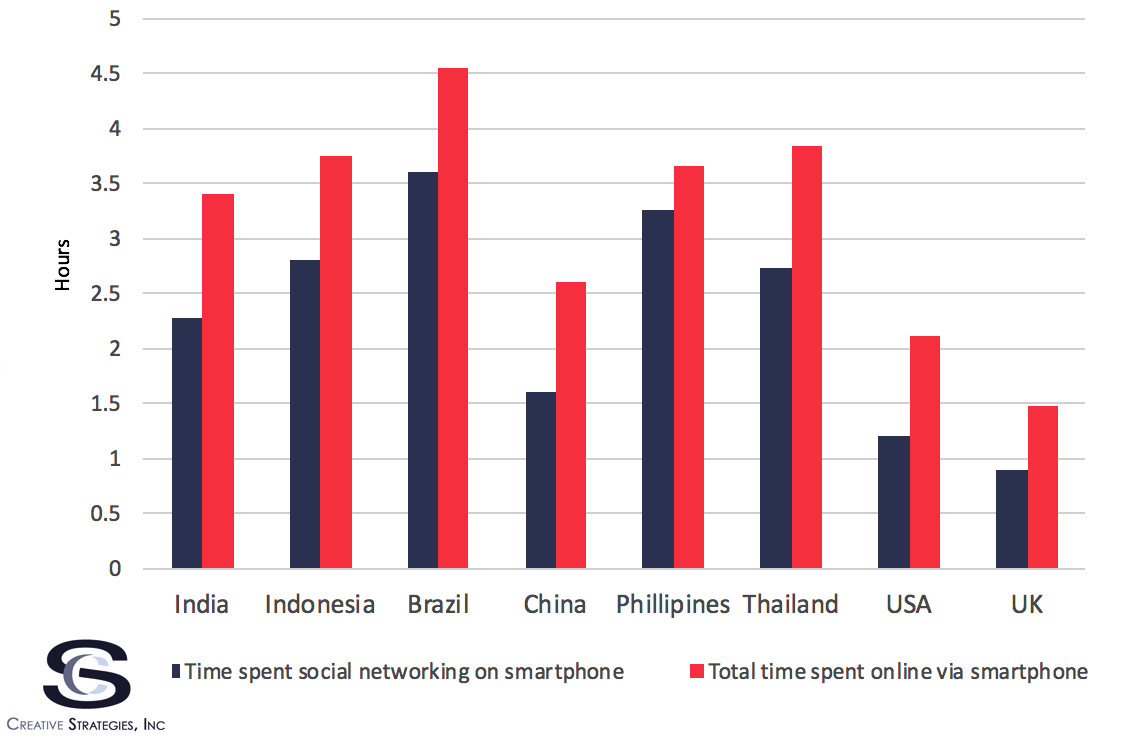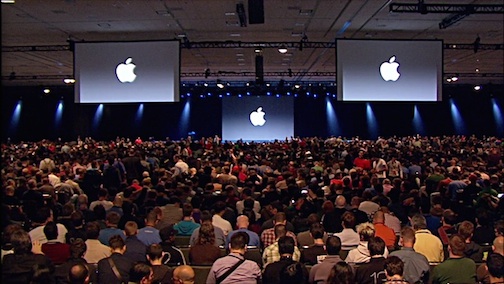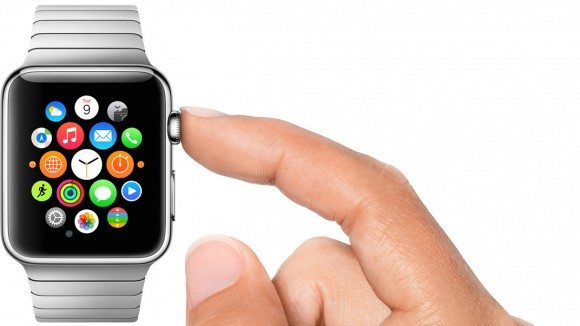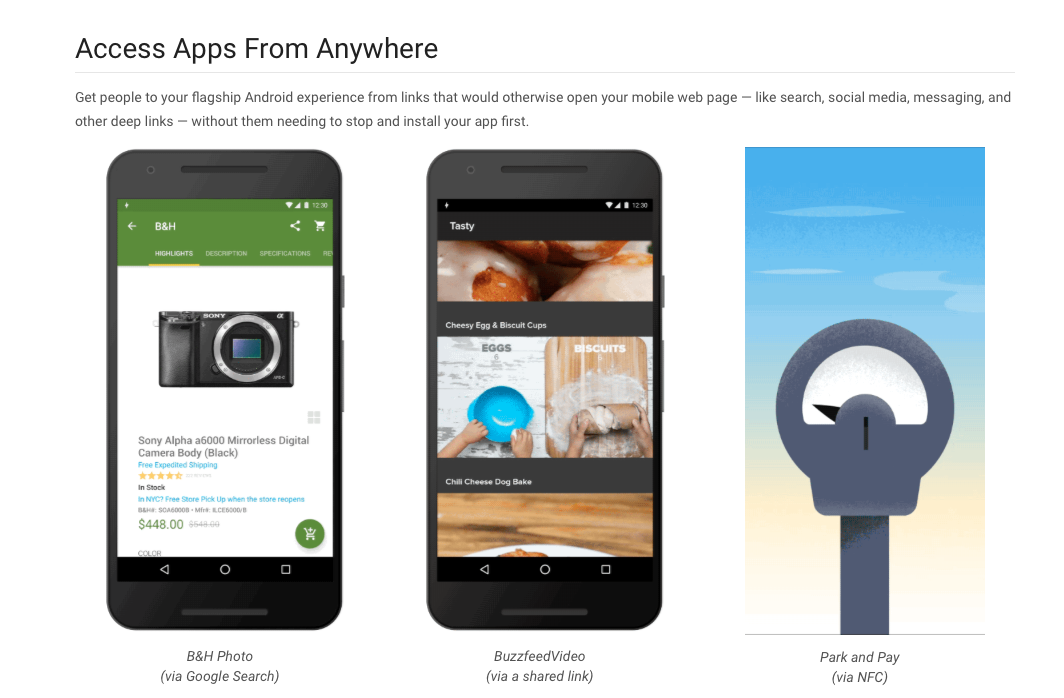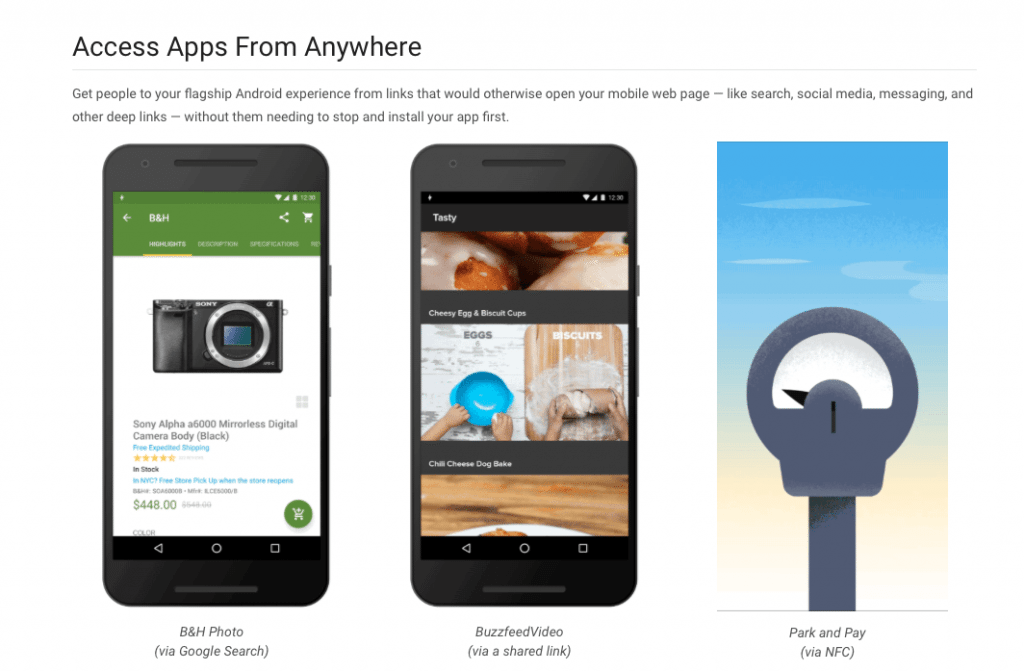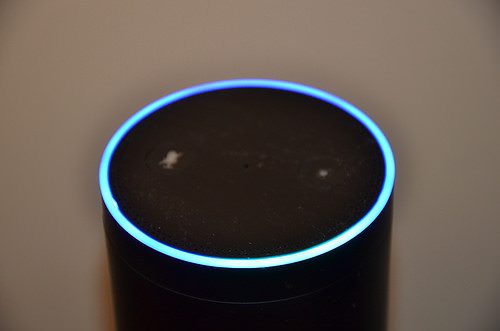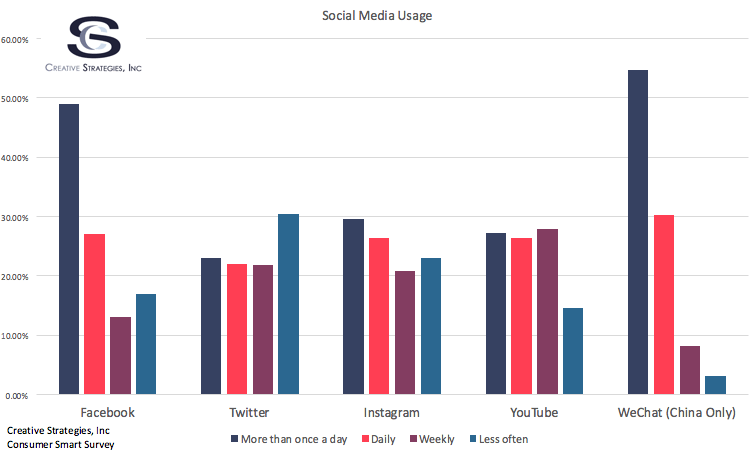Apple Music Numbers Show Continued Rapid Growth – by Jan Dawson
One of the numbers mentioned in Tim Cook’s “Updates” section at the beginning of this week’s Apple keynote, which may well have been missed in the focus on the latest iPhone and Apple Watches, was a new number for paid Apple Music subscribers. Apple now has over 17 million paid subscribers, which puts it over half of Spotify’s most recent paid subscriber number of 30 million.
Perhaps more significantly, if you assume a $10 per month average revenue per user (this is the standard price in the US, whereas lower pricing in some other markets is likely offset somewhat by family subscriptions at $15), this number puts Apple over the $2 billion annualized revenue rate for the first time. Spotify’s revenue last year was around $2.2 billion in total, so Apple is now getting very close to Spotify’s scale in revenue terms. Spotify has around 100 million total users, with about 70% on the ad-supported service, so Apple achieving similar revenue numbers with a fraction of the subscribers helps explain why the music industry has been so supportive of Apple’s efforts.
The broader financial benefits together with more direct financial incentives are likely the reason why Apple has been able to secure 70 first-run and exclusive releases for Apple Music in its first year or so, another stat Tim Cook touted during the keynote. Those exclusives, in turn, are driving interest in Apple Music and Apple seems to continue to turn trial subscribers into permanent paid subscribers at a decent clip. Since the launch of Apple Music, Apple has added around 50 thousand subscribers per day, with a more recent average closer to 30 thousand. At that run rate, it might hit 20 million subs by the end of the year.
In the grand scheme of things for Apple, Music is still small – even at $2 billion a year, it’s well under 10% of Apple’s Services revenue, which in turn is only around 10% of total revenue. But the healthy growth indicates Apple can successfully launch paid content services to its installed base, something that should give it confidence to try this approach in other areas, notably video.
Traditional IT Companies Announce Major Changes: Dell, HP Enterprise, Intel – By Bob O’Donnell
Though most of the world was focused on the relatively hum-drum announcements Apple made this week regarding their new iPhone 7 and Apple Watch Series 2, there were several very important announcements from the large, traditional IT companies this week. Dell announced they completed their merger with EMC to form Dell Technologies; Intel sold off its McAfee security arm to investment firm TPG, and HP Enterprise unloaded its software business to little-known Micro Focus International, a British-based software company that typically focuses on applications that work with older computer systems.
Individually, each of these announcements was definitely newsworthy but, collectively, they demonstrate that what many consider to be the “boring” old part of the tech business is very much alive and eager to make important strategic changes. Interestingly, the HP Enterprise and Intel deals reflect a desire to slim down and specialize, whereas the Dell/EMC merger represents the complete opposite. Chairman Michael Dell’s vision is to build a powerhouse of key hardware and software technologies, with a single perspective, in order to control all the tools necessary to build and deploy comprehensive solutions to today’s leading tech problems.
Throw in the fact HP, both Enterprise and Inc., remain public companies, while the vast majority of Michael Dell’s empire remains private, and you have a nearly perfect lab experiment of opposite strategic approaches to compare. It will be several years before we truly know which solution proves to be the most successful, but the dichotomy between the two approaches couldn’t be more distinct.
From a big picture perspective, the announcements reflect some strategy readjustments that were long overdue. Arguably, the Intel deal is the most obvious in the sense there never seemed to be a great fit between Intel and McAfee, nor was there much cross-fertilization between the two companies. For HP Enterprise, their deal gives them the opportunity to fix the widely-recognized blunder of their $11 billion Autonomy purchase.
For Dell Technologies, it’s clearly more of a bet that owning several key components necessary to drive changes—the transition to public and hybrid clouds, the move towards the Internet of Things in business environments—will be key to driving successful deployments. Frankly, I like the potential of what this Dell/EMC combination has to offer but executing on the core principles will be key to long-term success.
Nintendo Decides They Finally Like Money – By Ben Bajarin
Years ago, during my first writing gig for Slashgear, I wrote this column titled “Does Nintendo Hate Money?” My argument was they were missing mobile and thus missing being a key player in one of the largest computing shifts we have ever seen. Luckily, they have finally seen the light.
Mario Runs was likely in the works well before Pokemon Go hit the market. But my hope with Pokemon Go was that Nintendo would finally see why they need to bring their iconic brands to smartphones. I’ve long toyed with the scenario of Apple buying Nintendo, since these games as iOS exclusives would only strengthen Apple’s differentiation, as well as add a big upside in software/services revenue. Unfortunately, had this even been an idea for Apple, they should have done it before their stock went on a run, thanks to their waking up to the smartphone gaming era.
I understand why Nintendo took so long. They were, in fact, deploying a philosophy not that dissimilar to Apple where they make their own hardware and software. The problem here is the video game console market is niche and very small compared to smartphones. The notion that Nintendo needs to define the hardware experience in order to differentiate their games is no longer defensible. There may be some experiences Nintendo leaves to their consolers but that is for a niche segment. The time has come to bring Mario to hundreds of millions of consumers who have never played this franchise or others from Nintendo. And it’s time for Nintendo to make money off customers they never had a chance of selling a console to.
Lastly, I like the business model Nintendo is utilizing. Coming from a gamers perspective, many of the freemium games are designed in a way to manipulate the game play so you have little to no chance to progress in the game without spending a lot of money. While I understand why, the game dynamics are the exact opposite of consumer friendly. As controversial as this statement may be to some, freemium needs to die because it creates really crappy games. Pay a small fee once is the way to go as it yields a much more consumer friendly experience. Let’s hope this model works and is used as an example for others to learn from.
Added Revenue Might Not Be The Most Valuable Benefit AirPods Bring to Apple – by Carolina Milanesi
Apple talked about the removal of the audio jack as a courageous move and, while it might be a little exaggerated, it is true that every time you try and fix something that is not broken you are playing with fire. Humans do not like change, not even when change might be bringing them a better experience or simply a futureproofed one.
What is interesting is the options Apple has given users to deal with the change. There are Lightning EarPods in the box, an adapter for older EarPods in the box, the new AirPods, Beats Headsets and all other headphones and earphones for sale. So plenty of choice for iPhone 7 users. This made me wonder what the AiPods buyers can tell Apple about themselves:
- They appreciate good sound quality
- They value the full ecosystem of products that can connect to the AirPods
- They engage with Siri
- They value Apple even over an Apple-owned brand like Beats
- They are not price sensitive
- They are early adopters
- They are making a statement
Looking through this list, it is apparent to me many of the statements would apply to Apple Watch owners. This in turn makes me wonder if AirPods are a way for Apple to test the next step in wearables and/or the role voice UI could play going forward. A way to test how far they can push the more engaged group of users they have.
The fact AirPods came to market under the Apple brand rather than Beats is also significant in my view. It means Apple sees them not only as innovative but as a key part of the experience going forward. An experience that users who appreciate the end to end offering will seek out first and therefore become ambassadors for Apple exactly as they have been doing with Watch.





